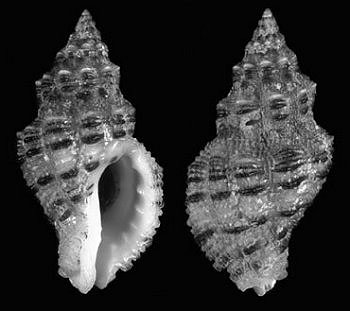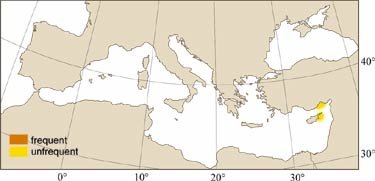
|
Relevant Synonyms
Misidentification
|
|
| photo: S. Gofas / Coll. R. Houart |
|
SHORT
DESCRIPTION
color :
whitish to tan with the cords stained with brown on the nodes of peripheral keel and body whorl spirals. Aperture cream or yellowish inside.
common size :
up to 25 mm in the Red Sea; Mediterranean specimens 18 mm. |
DISTINGUISHING CHARACTERISTICS
BIOLOGY / ECOLOGY
habitat :
unknown. |
|
1st
Mediterranean record
|

|
|
DISTRIBUTION
|
ESTABLISHMENT SUCCESS
speculated reasons for success :
|
|
|
MODE OF
INTRODUCTION |
IMPORTANCE TO
HUMANS |
|
KEY
REFERENCES
|
|
|
 Ergalatax martensi (Dall, 1923) [Engl, 1995]
Ergalatax martensi (Dall, 1923) [Engl, 1995]